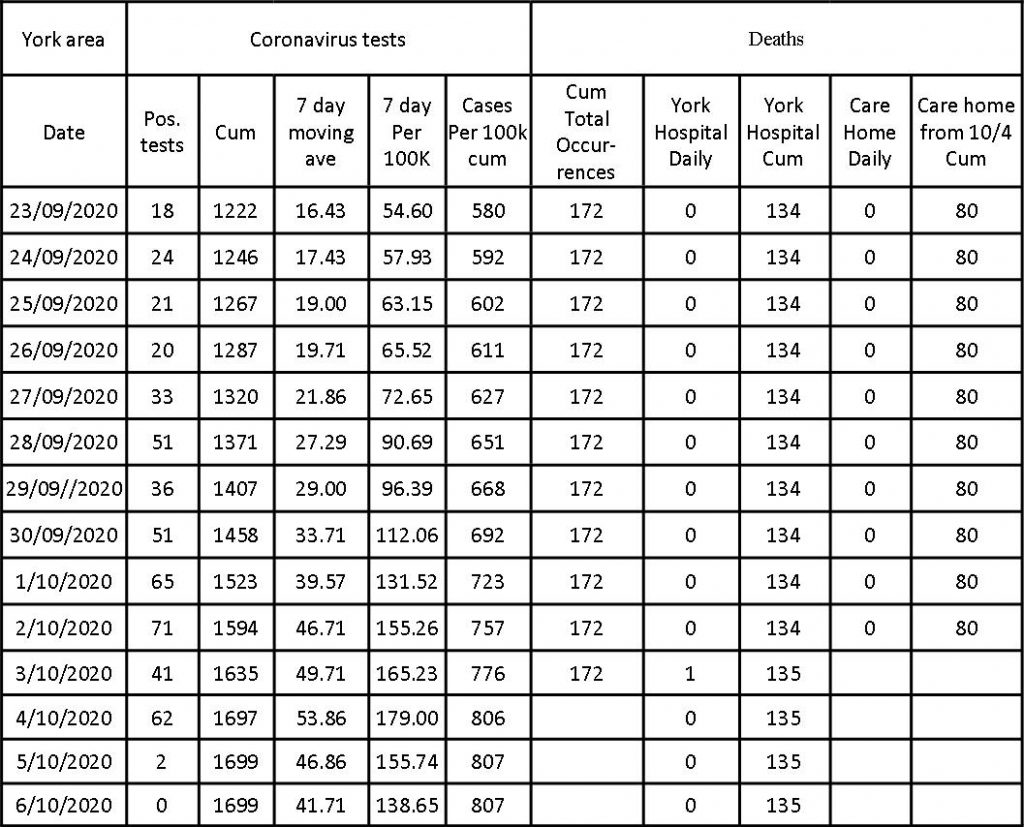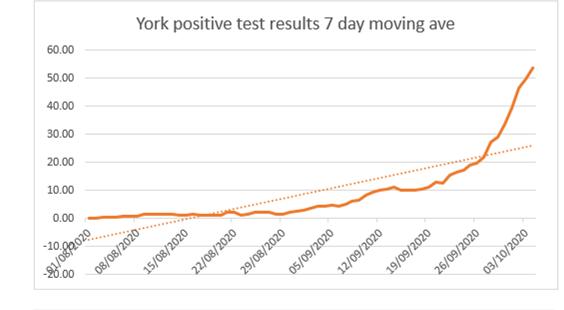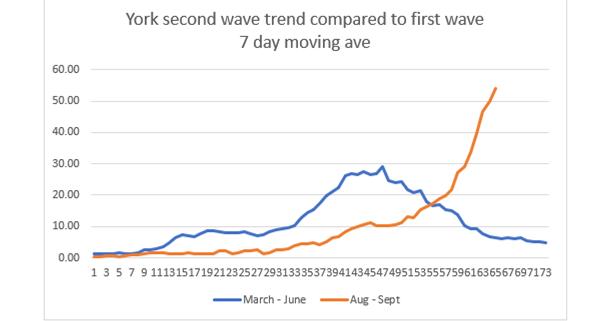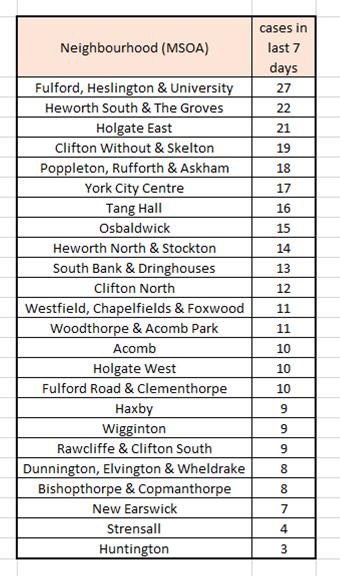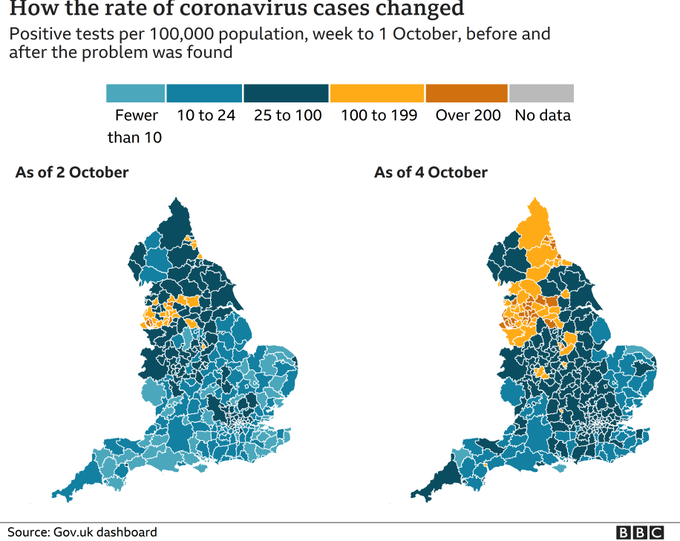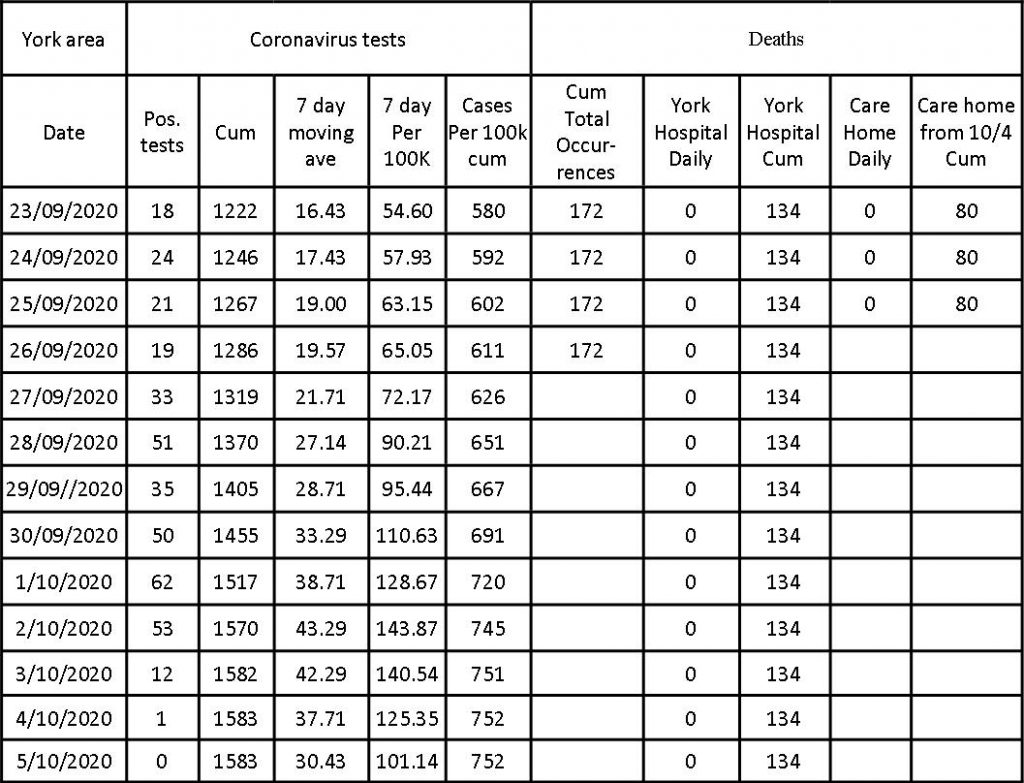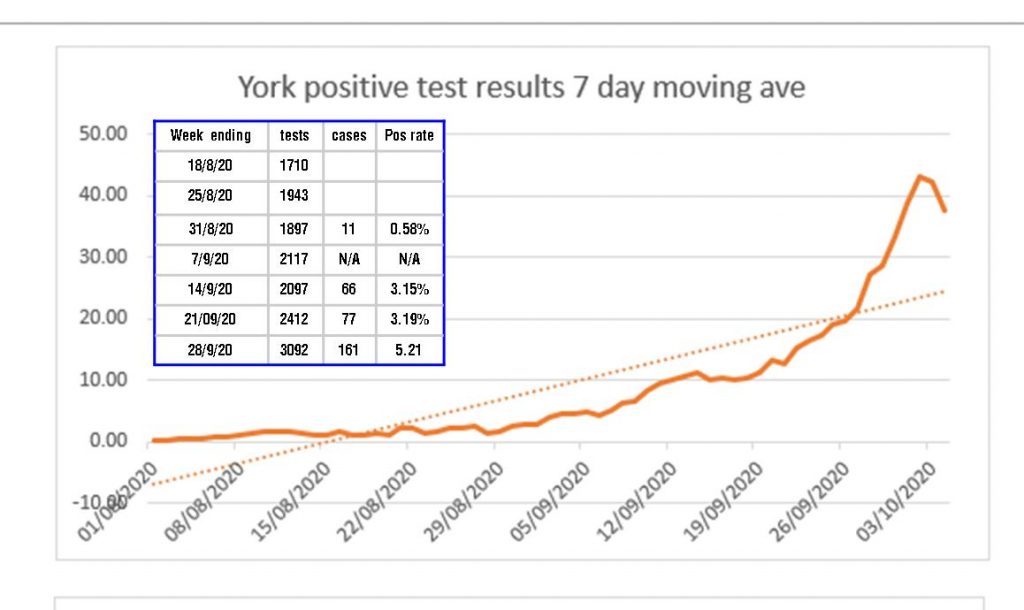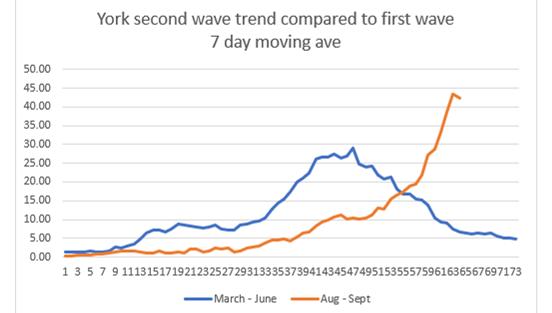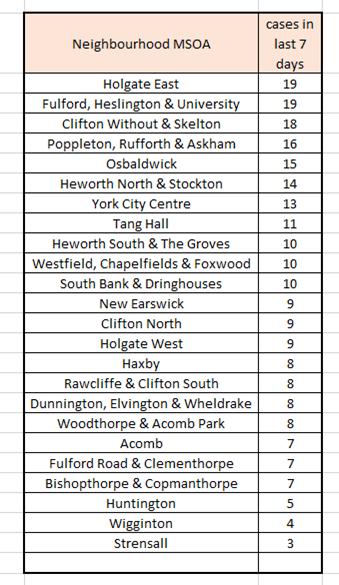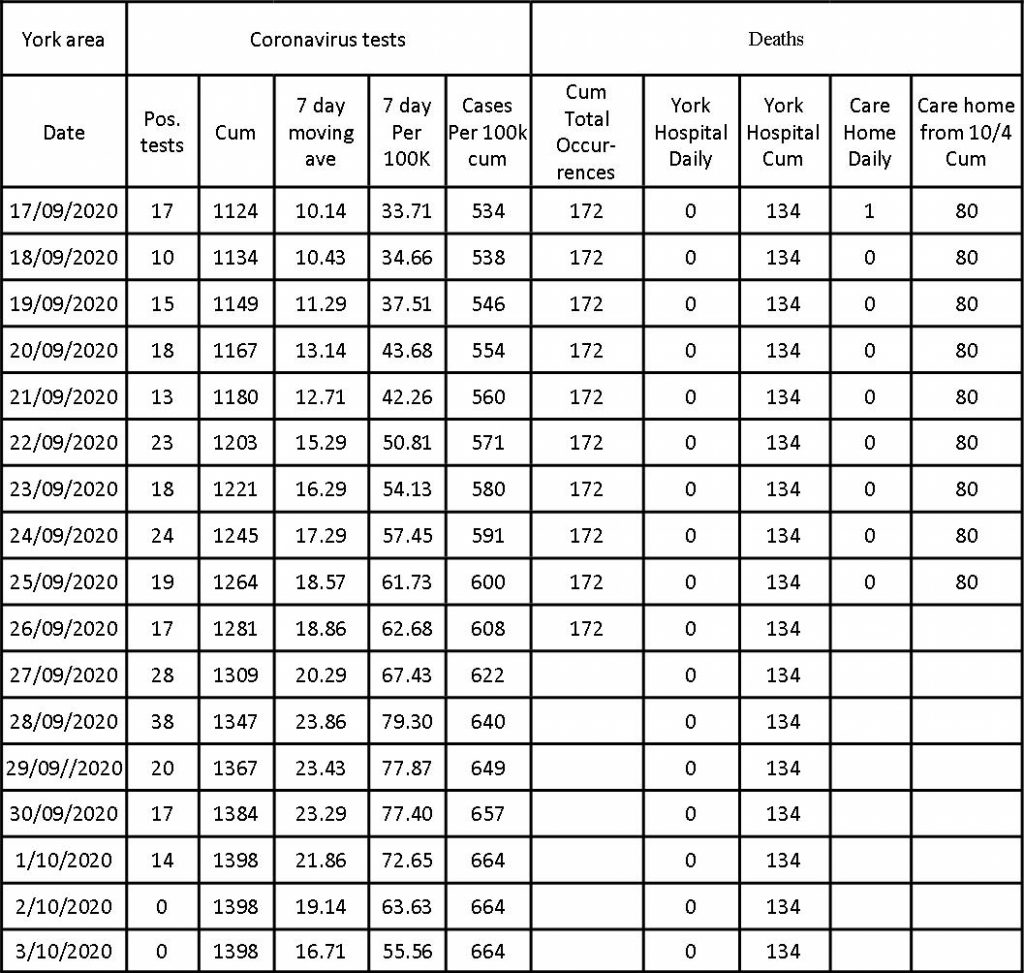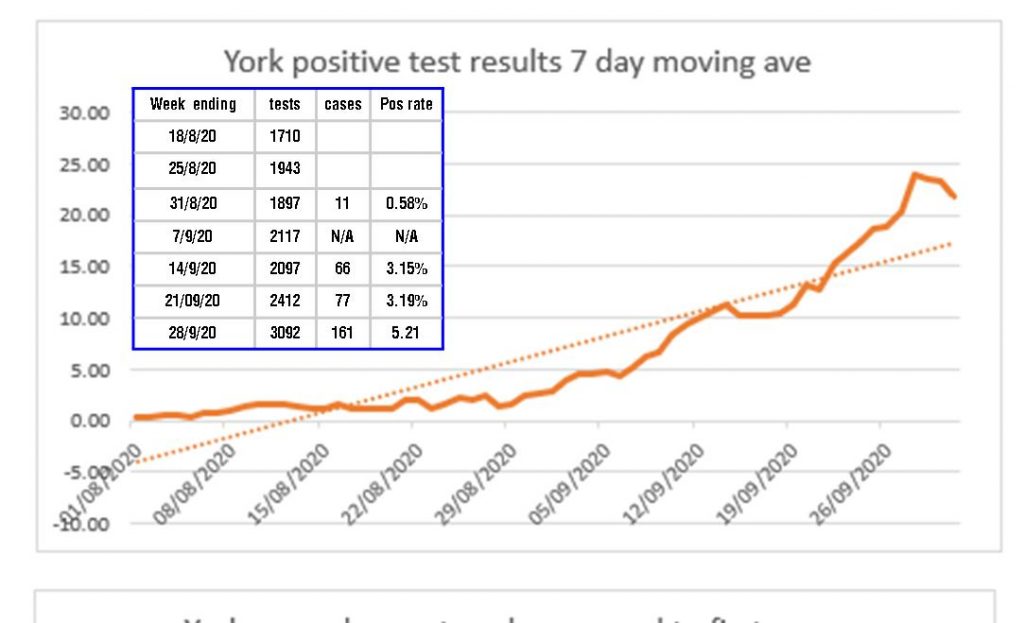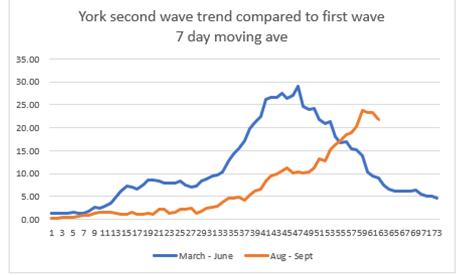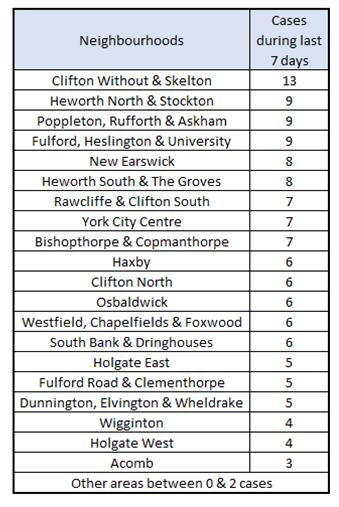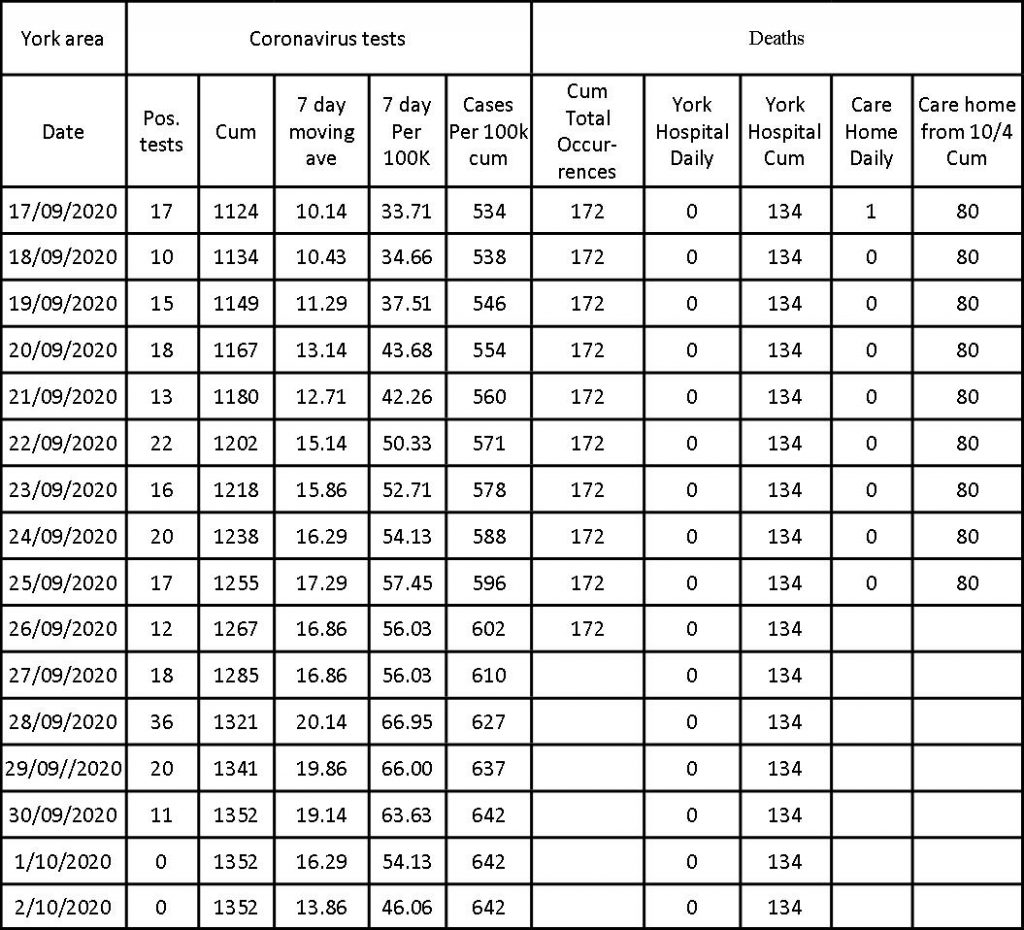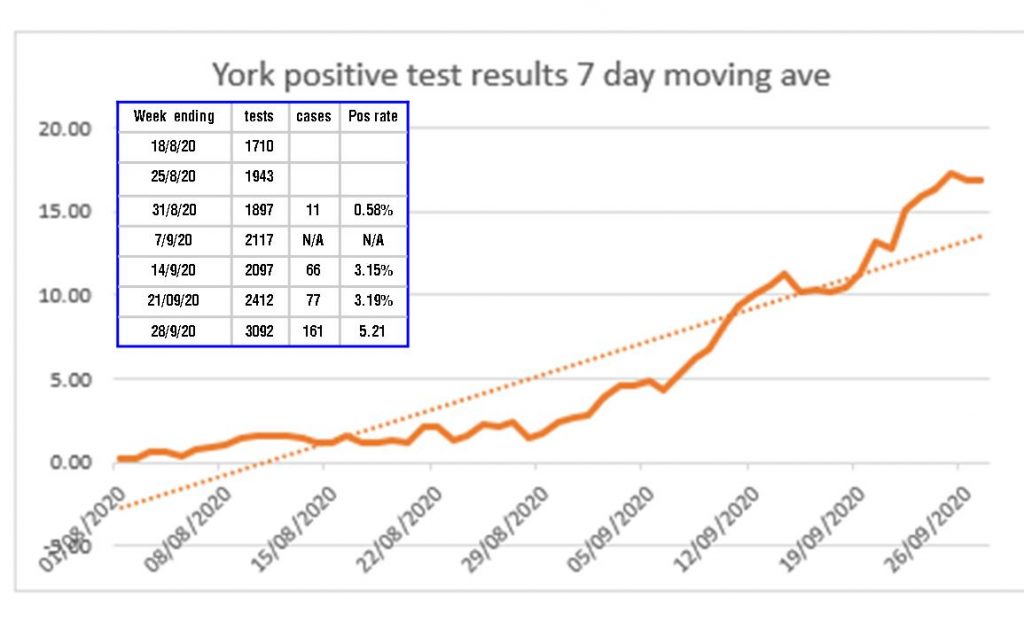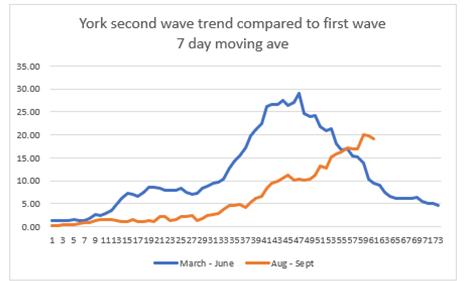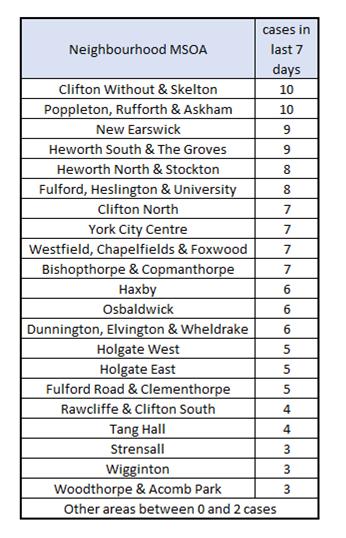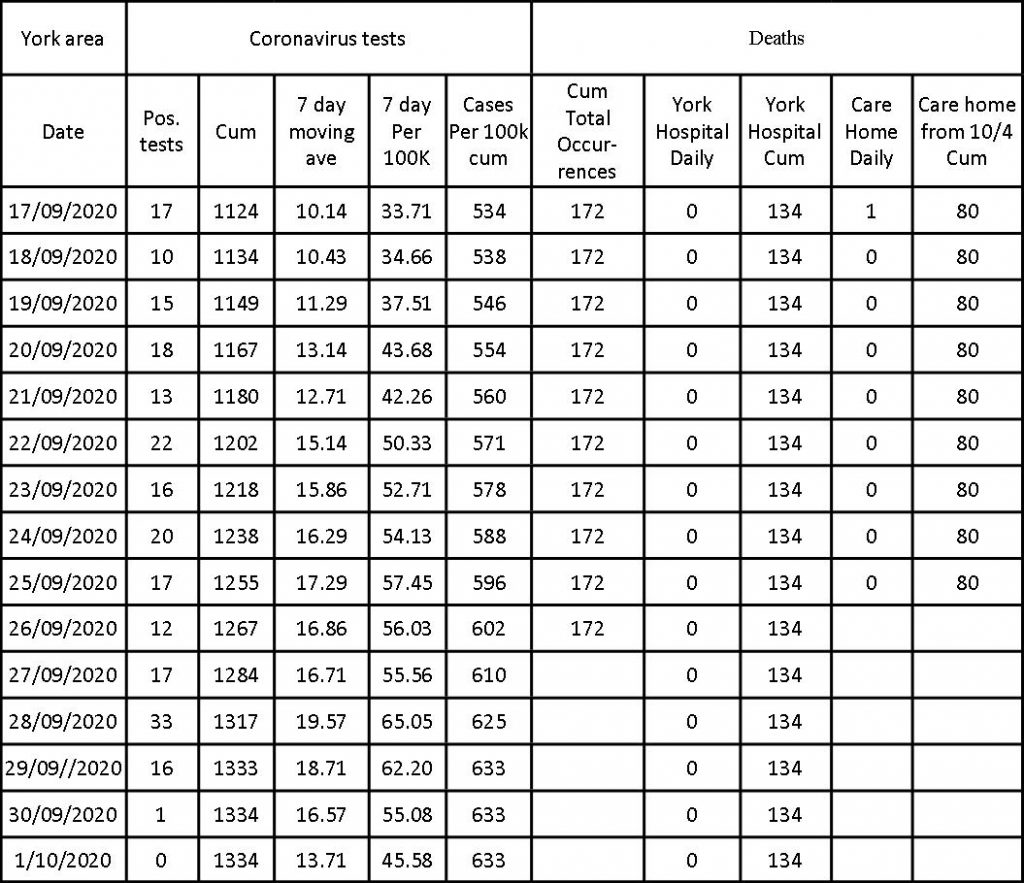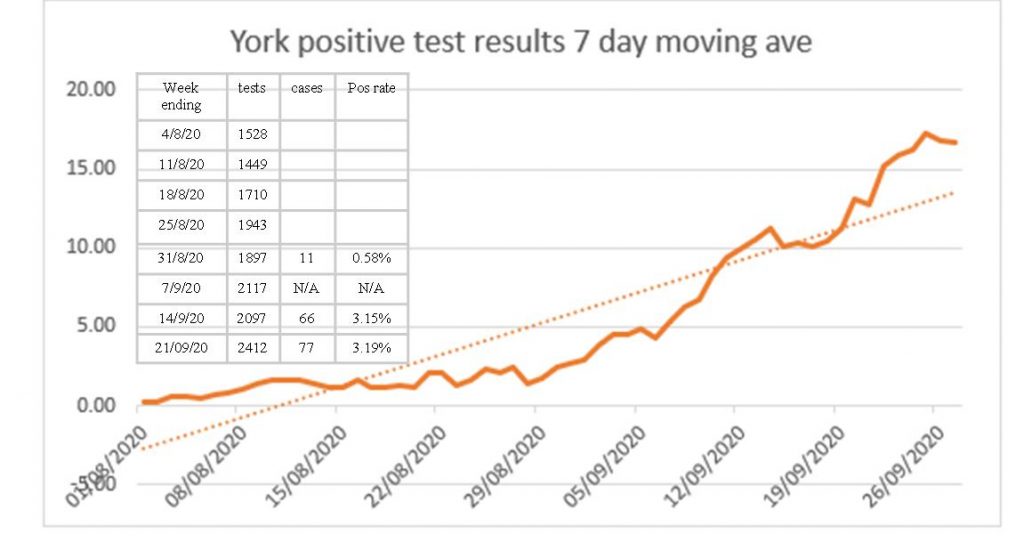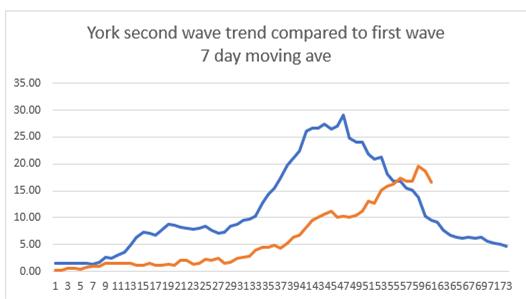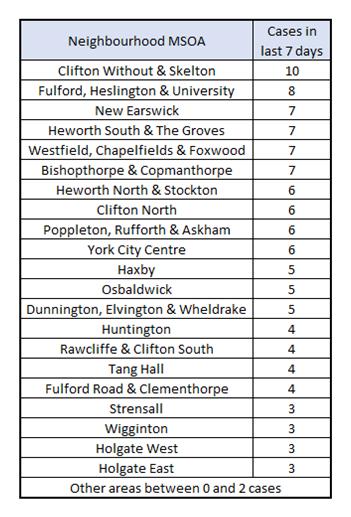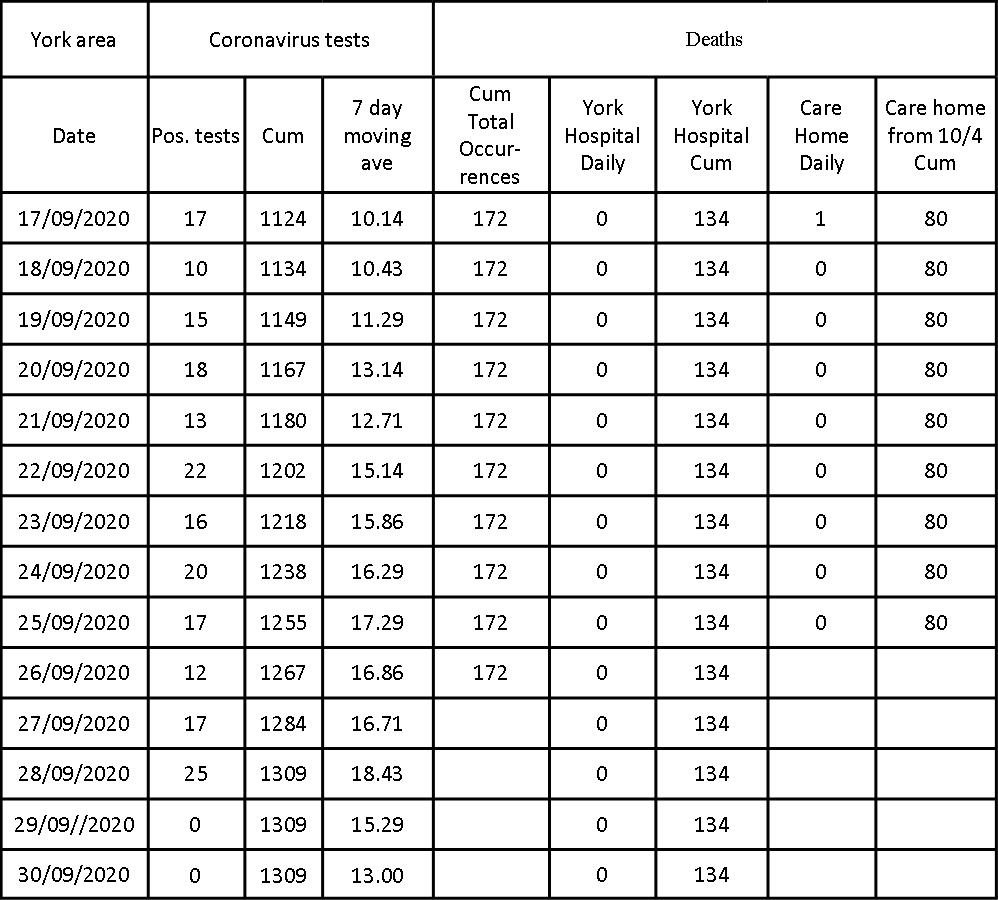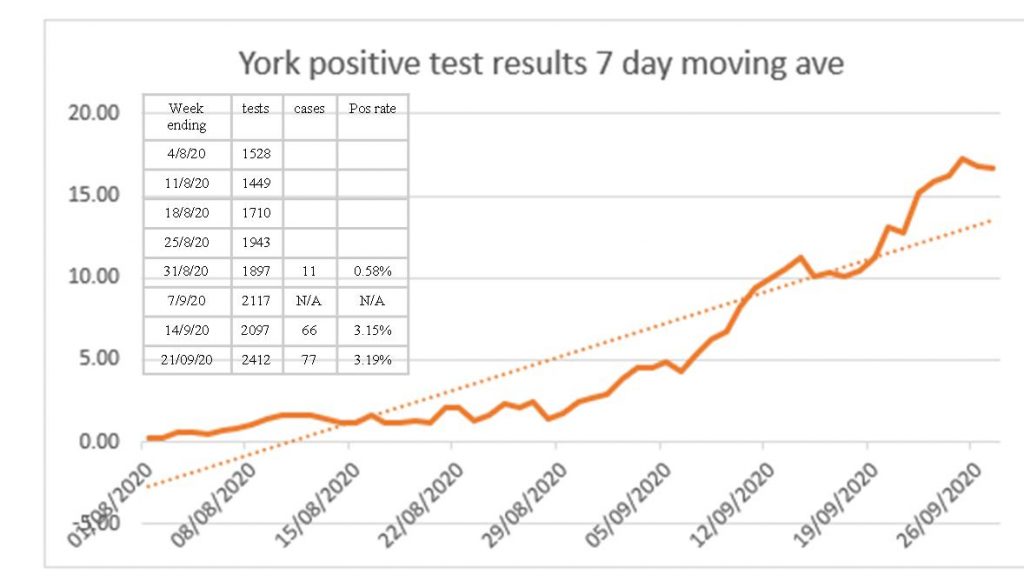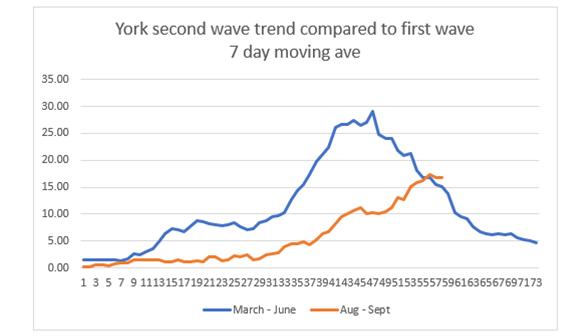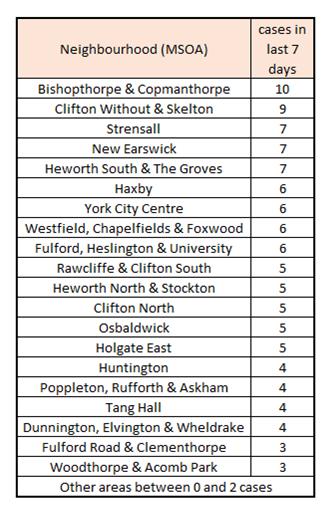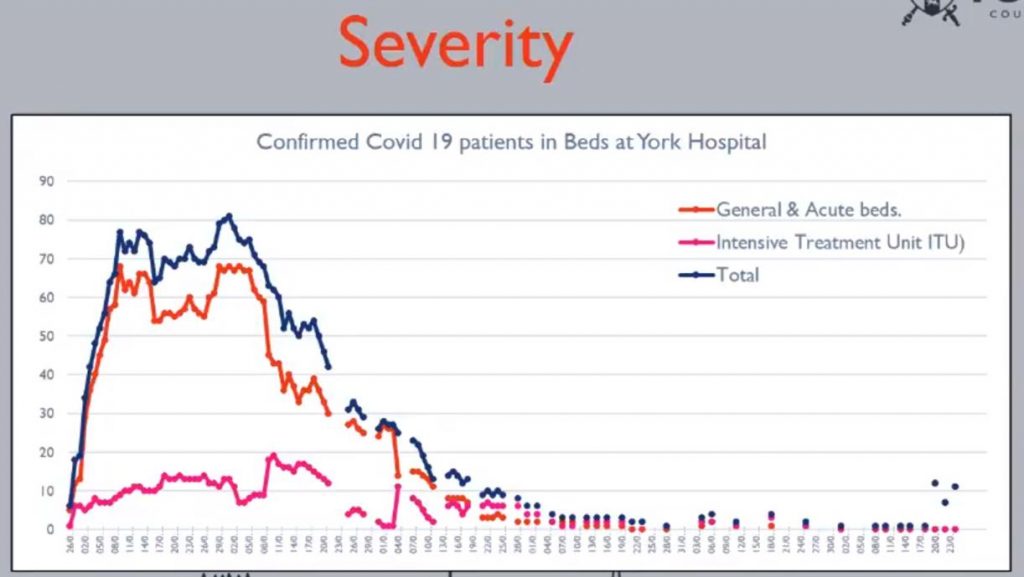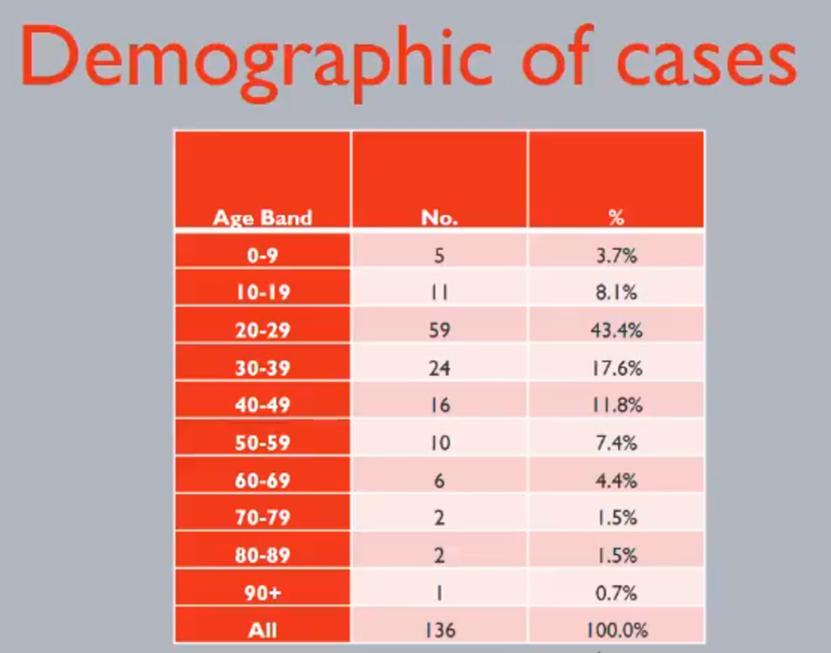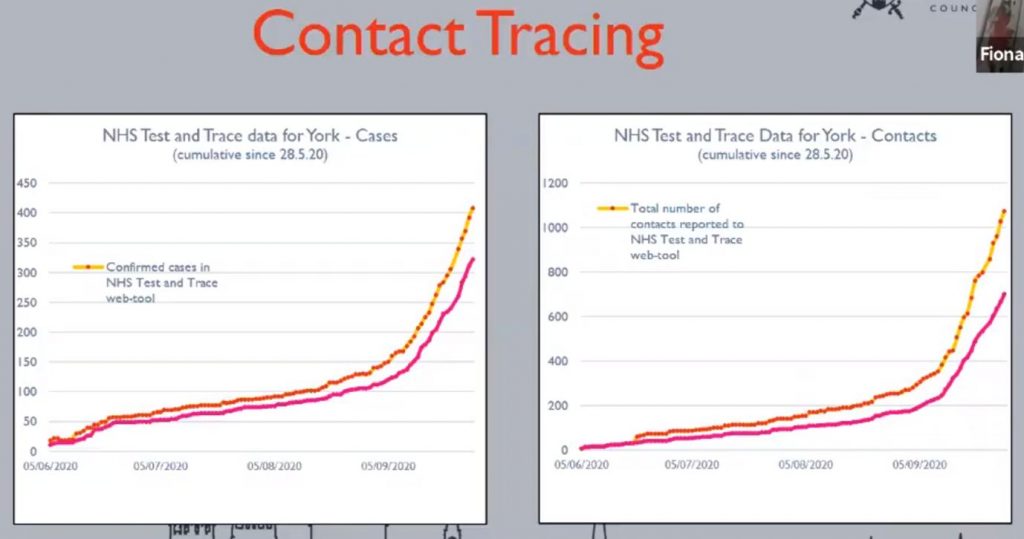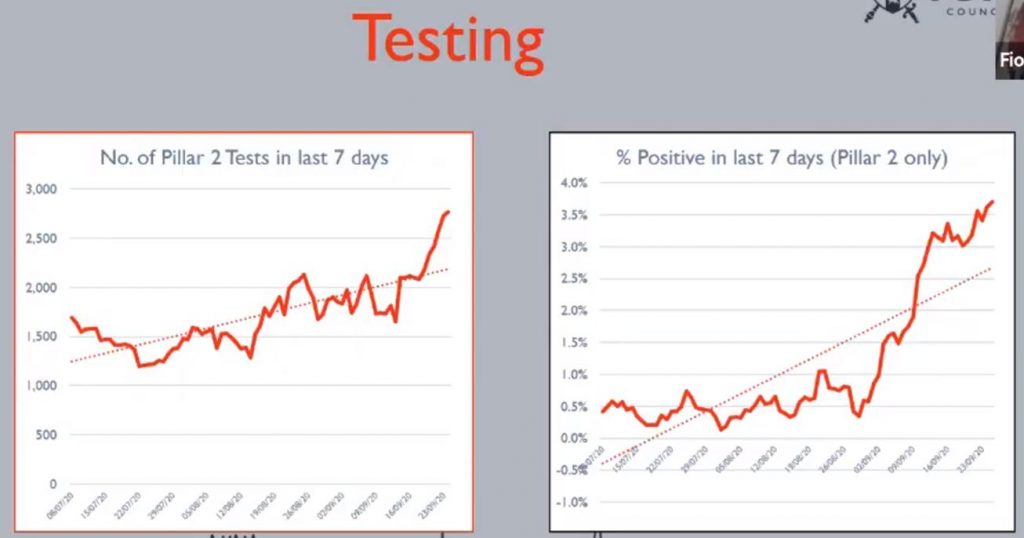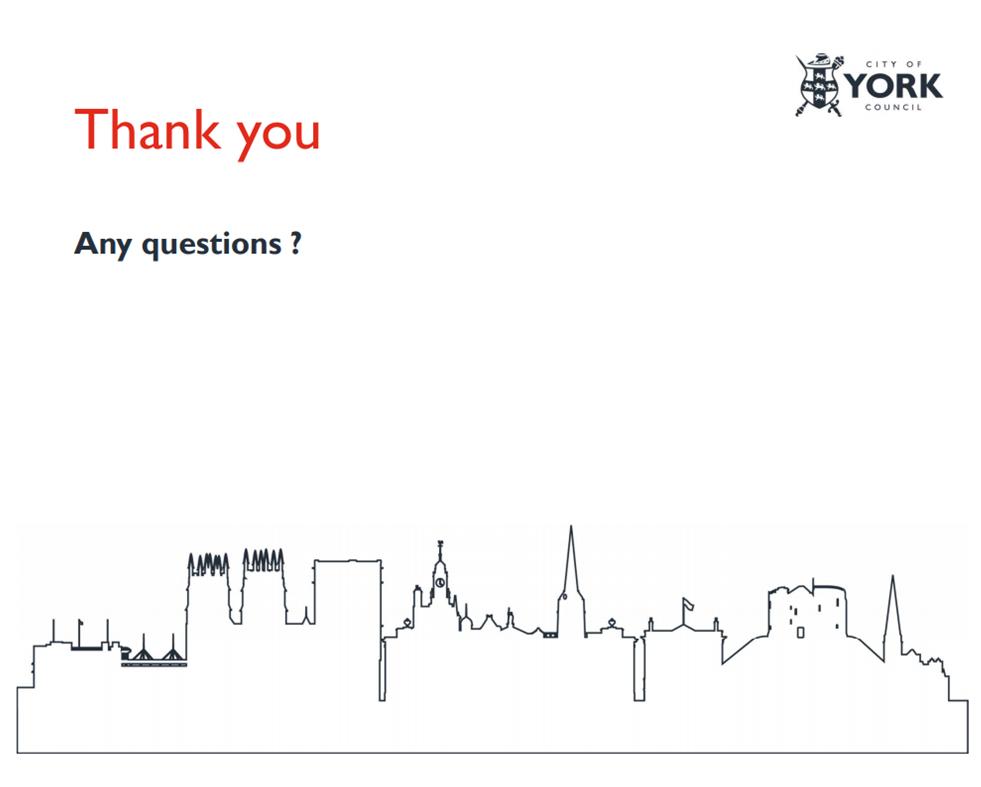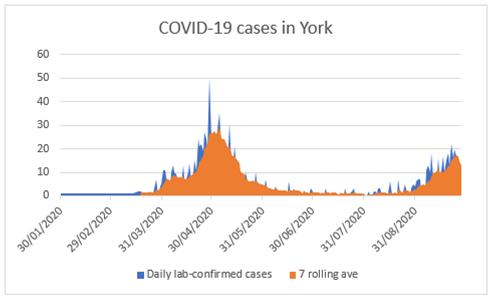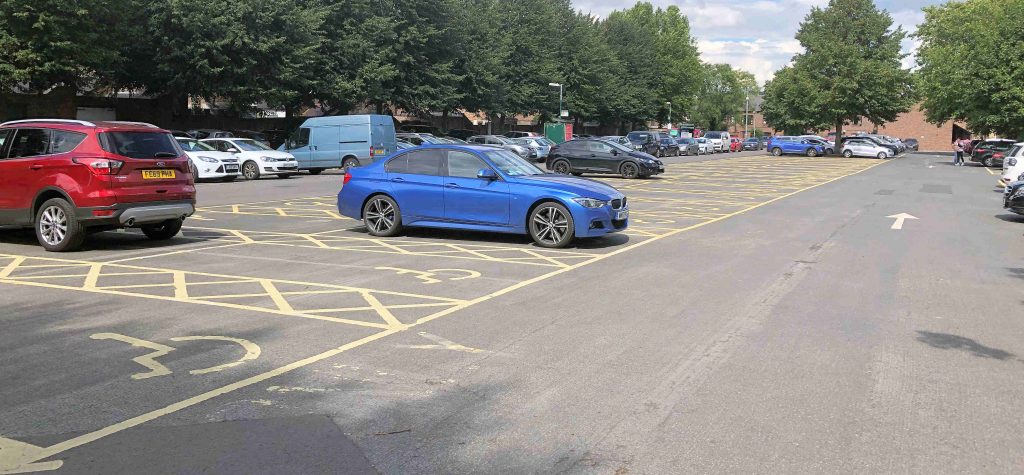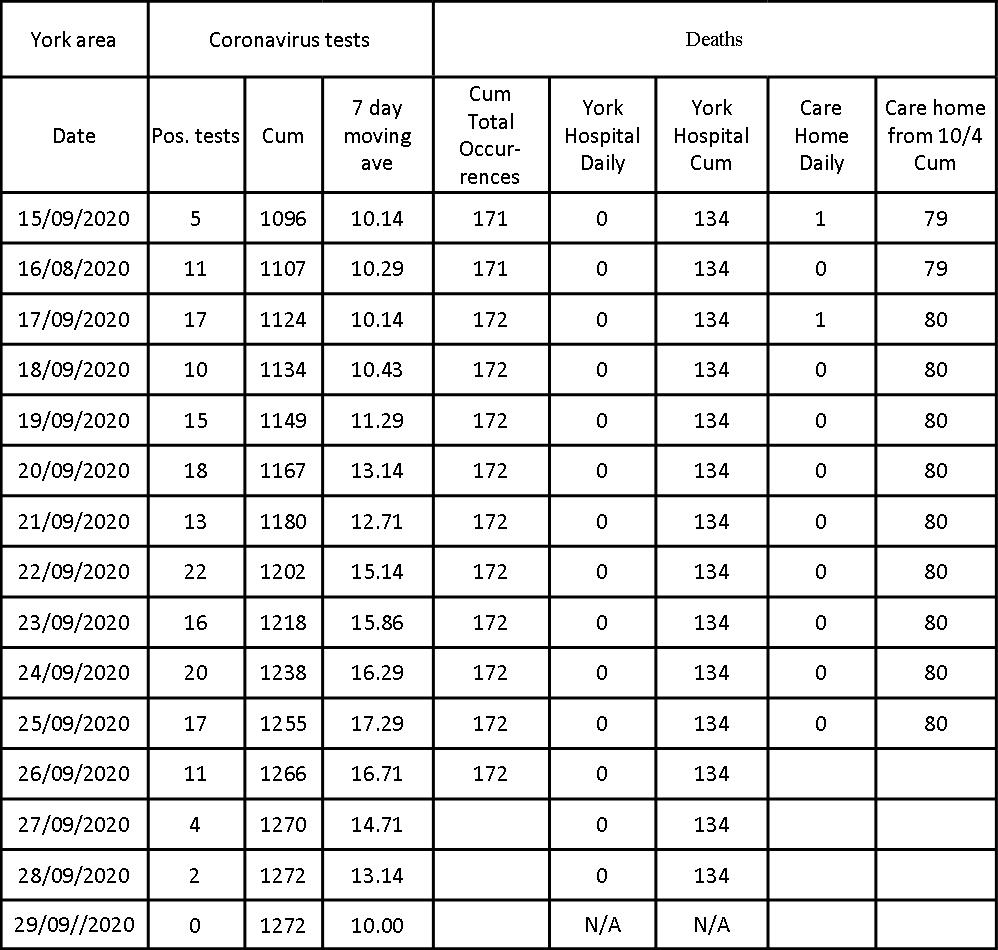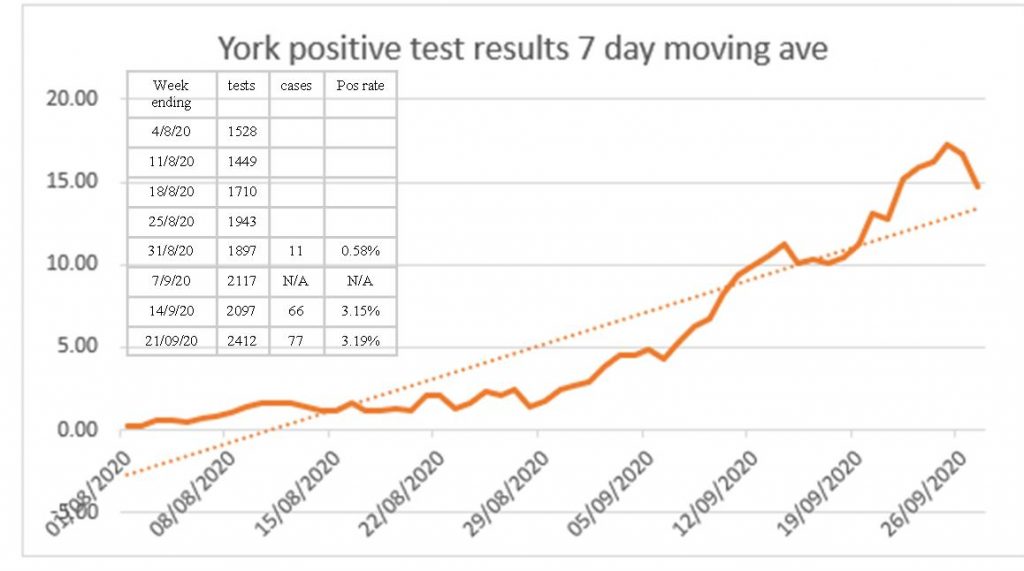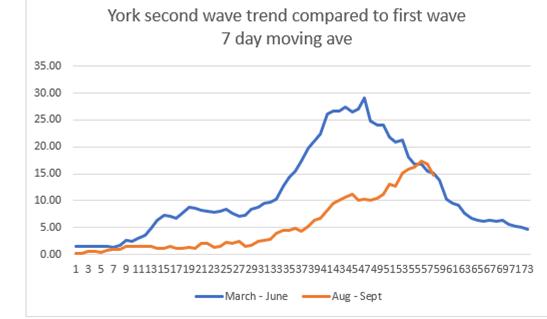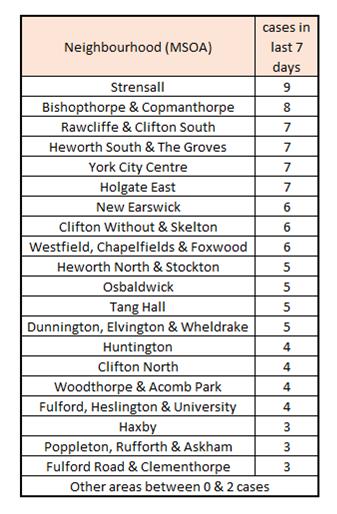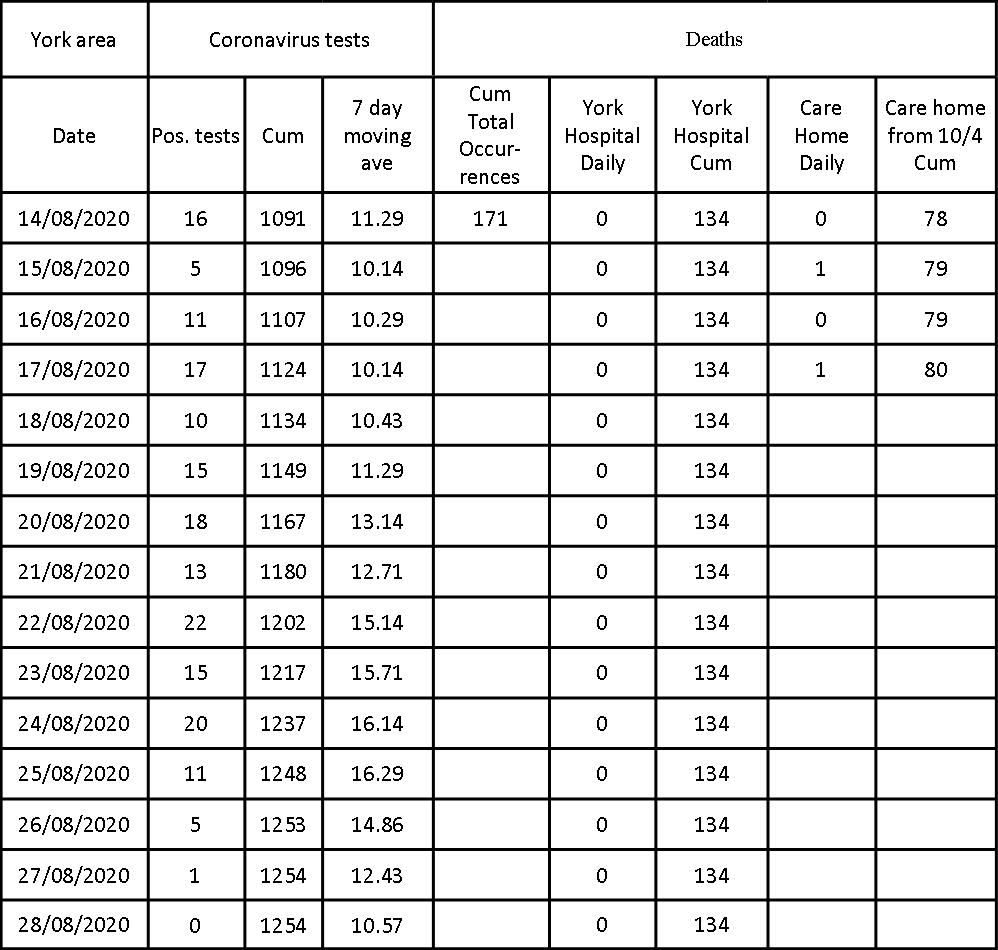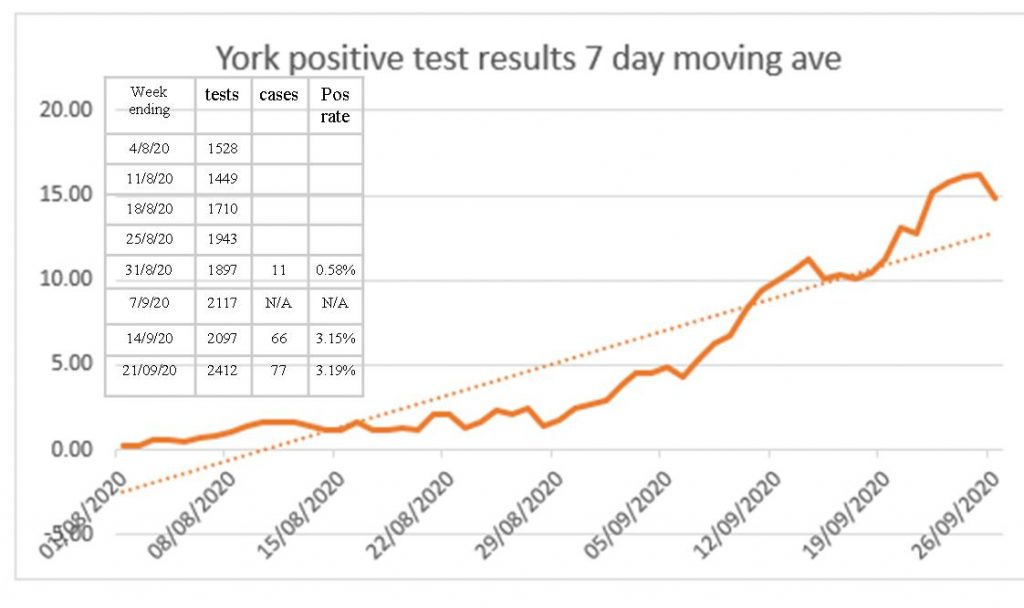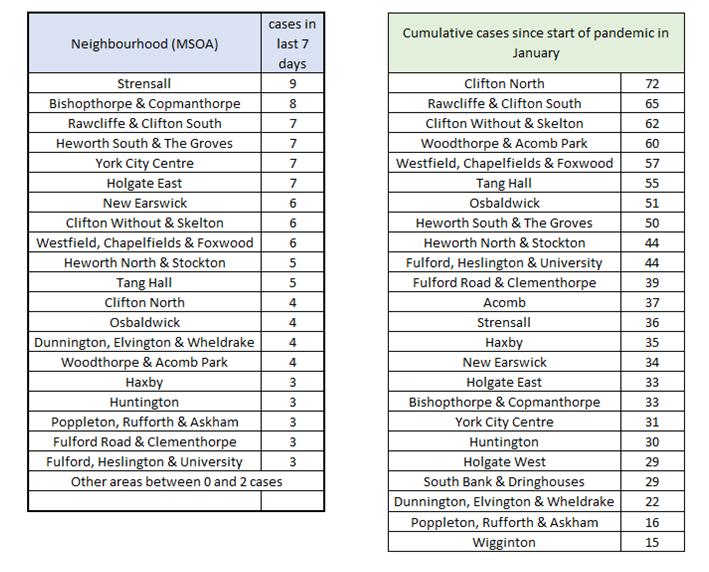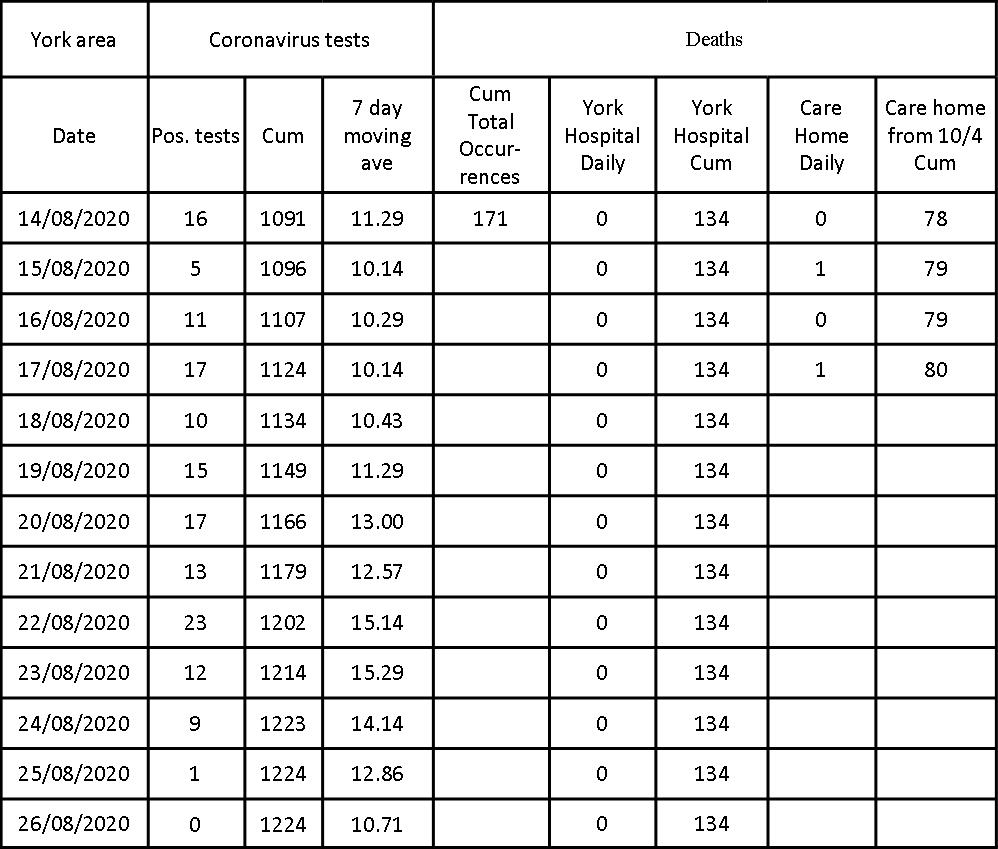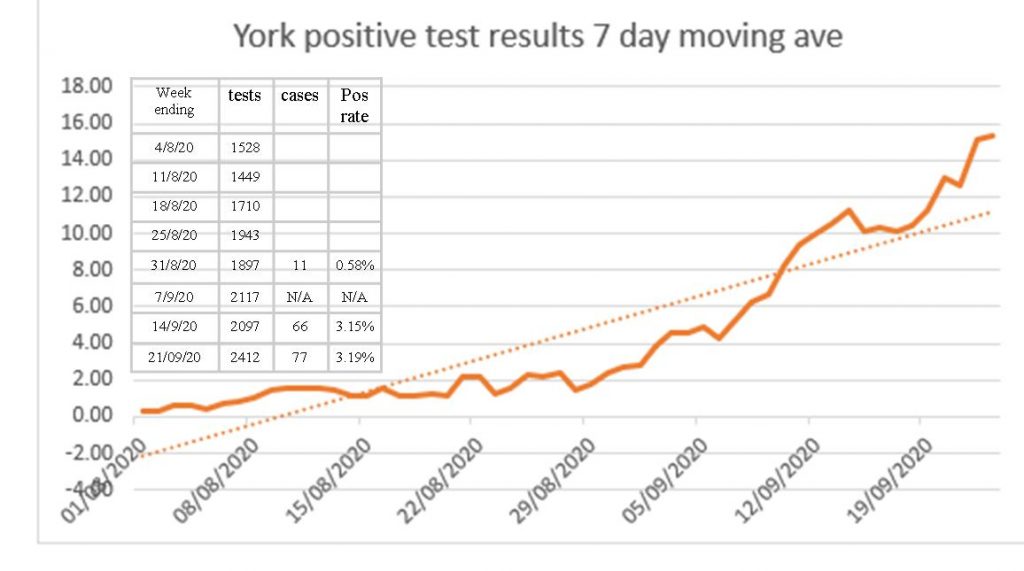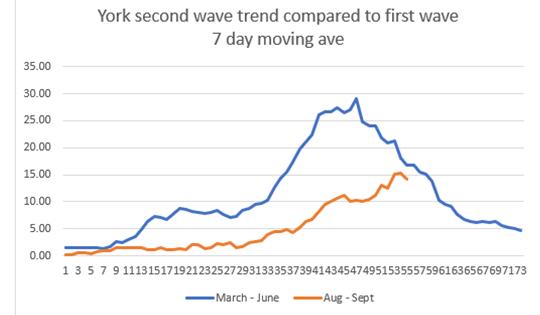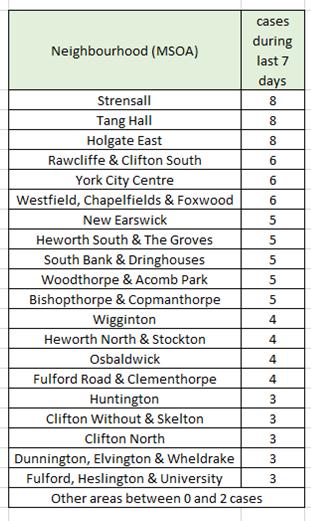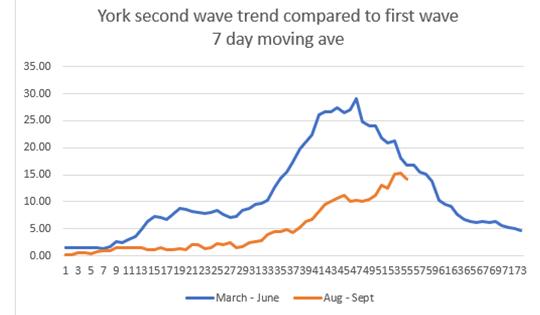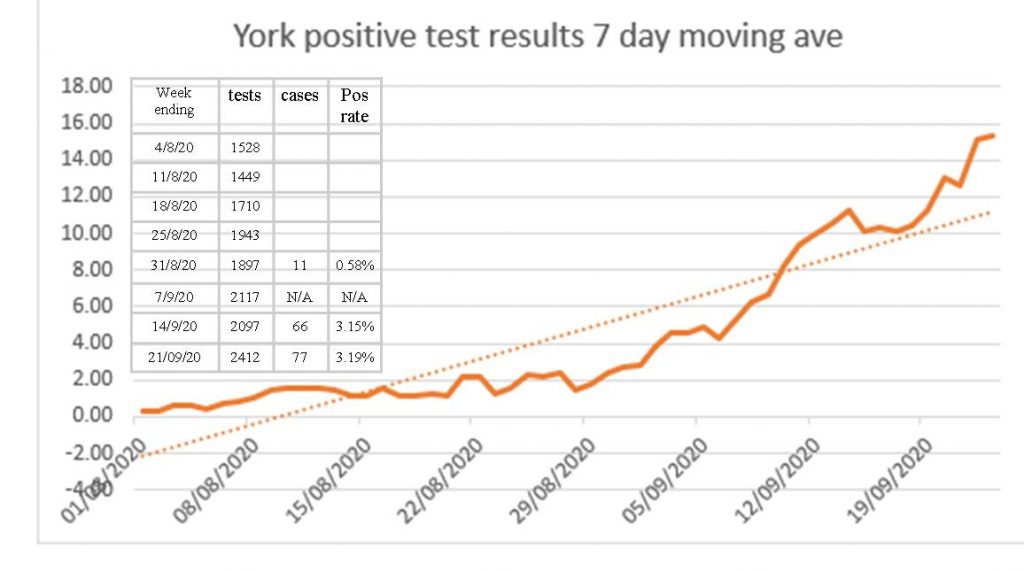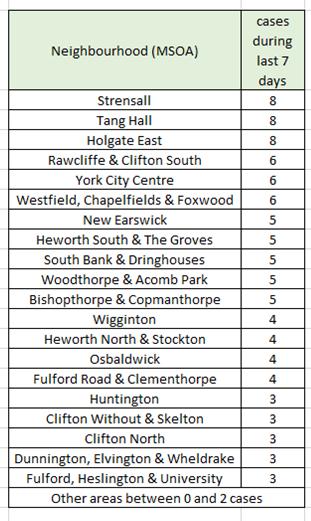Deaths and test results
There have been EIGHTEEN additional positive test results announced today bringing the cumulative total to 1352.
There have been no additional hospital deaths
The worst affected neighbourhoods over the last 7 days have been Clifton Without/Skelton and Poppleton/Rufforth/Askhams
Council commentary updated
The York Councils commentary on the crisis has been updated on the “open data” website
It is reproduced below (NB The clarity of the report has been improved this week but still lacks hospital capacity data)
The data is accurate as at 8.00 a.m. on Friday 2.10.20. Some narrative for the data covering the latest period is provided here below:
People with Covid Symptoms
• NHS Pathways /111 triages – as at 28.9.20 there had been 433 total covid triages in the CYC area in the last 7 days. The numbers have just started to fall in the last few days after a very steep rise over the previous 2-3 weeks with a peak of 653 triages in the 7 day period to 20.9.20.
• As at 1.10.20, the Covid Symptom App estimates 483.9 per 100,000 in York with symptomatic covid (responses from a sample of 5,302 people). This represents the second daily fall in the prevalence estimate after a month where the figures rose each day.
Diagnosed cases (Pillar 1&2 combined)
• As at 1.10.20 York has had 1,334 cases, a rate of 633.4 per 100,000 of population. The rate in York is lower than national (699.9) and regional (925.9) averages.
• The PHE ‘Exceedance’ rating compares the no. of new cases over a 14 day period with the previous 6 weeks and provides a RAG rating to indicate if the previously observed trend in the no. of new cases is worsening. The latest rating for York (28.9.20) is Green.
• The provisional rate for the last seven days of new Covid cases per 100,000 of population in York as at 29.9.20 is 62.20. The latest local “validated” 7 day rate at 25.9.20 was 57.6. The national and regional averages at this date were 59.6 and 84.1 respectively
• As at 28.9.20, the latest 7 day positivity rate in York (Pillar 2 only) was 5.21% (161 positives out of 3,092 tests). The national and regional averages are 4.4 % and 6.0% respectively. The number of Pillar 2 tests being carried out in York is increasing.
Contact Tracing
• Since 28.5.20 a total of 475 laboratory confirmed CYC Covid cases have been uploaded into the NHS Test and Trace system and 377 of the cases have been engaged. 1,295 ‘contacts’ have been identified and 842 of these have been traced.
Deaths
The two sources about deaths from Covid-19 at LA level are ONS data and local registrar data. They are derived from the same source (civil registration data). ONS data is more comprehensive as it includes deaths of York residents which have occurred and been registered outside York. Local registrar data is useful as it provides a breakdown by age and gender. The most recently available data is summarised below:
• ONS weekly data: For deaths occurring up to 18th September 2020 and registered up to 26th September 2020, 172 deaths were recorded as having occurred for CYC residents (83 in hospital, 77 in care homes, 9 at home and 3 in a hospice. The number of deaths per 100,000 of population in York is 81.66 which is lower than the national average of 88.74. The most recent death reported for a York resident was in week 38 (12 to 18 September).
• ‘Excess’ deaths (ONS). In week 38 (12 Sept to 18 Sept), 25 deaths occurred in York, which is 5 fewer than the average weekly number for 2014-18. Over the last 17 weeks the total number of deaths in York has been 47 fewer than the average for the equivalent weeks in 2014-18.
• Local Registrar data: In the weekly data received on 28.9.20 (for deaths occurring up to 23.9.20), a cumulative total of 163 deaths of CYC residents where COVID-19 was mentioned (confirmed or suspected) on the death certificate, have been registered. The average age of the people who died was 82.5, with an age range of 53-104. The age profile of those dying in York is slightly older than the national average. 87 of the 163 were male (53.4%), slightly less than the national average (55.1%). 81 of the deaths occurred in hospital and 82 were community deaths (e.g. at home or in a care home or hospice). 71 people (43.6%) died in nursing /care homes (the national average is 29.49%). In addition 13 people (8%) who normally resided in nursing/care homes in the CYC area, died in hospital.
Data on deaths occurring in hospital are shown below. Deaths are initially reported for York NHS Foundation Trust which includes Scarborough Hospital and the further breakdown by site can be delayed. From local registrar data, 58.1% of COVID-19 deaths occurring at York Hospital have been CYC residents. (NB NHS Trusts record deaths following a positive covid-19 test (within 28 days) whereas ONS record deaths where covid-19 in mentioned on the death certificate so the totals are not the same).
• Deaths at York Hospital: As at 1.10.20, 134 deaths of people who had tested positive for COVID-19 and were being cared for at York Hospital have been reported. 214 deaths have been reported by the wider York NHS Trust.
New testing site
The Council and government have issued the following media release.
A new walk-through coronavirus testing facility is to open for those with symptoms to book appointments at Wentworth Way Car Park, the University of York, in York.
This is as part of the Government’s UK-wide drive to continue to improve the accessibility of coronavirus testing for local communities.
Testing is available only for those with coronavirus symptoms – a high temperature, a new, continuous cough, or a loss or change to sense of smell or taste. Anyone with one or more of these symptoms should book a test at nhs.uk/coronavirus or by calling 119. From the start of the pandemic, testing has been prioritised for the most vulnerable, including patients in clinical settings and care home residents, vital health and care staff and to manage outbreaks.
The new site is situated so as to be easily accessible without a car. Those being tested will be required to follow public health measures, including social distancing, not travelling by taxi or public transport, practising good personal hygiene and wearing a face covering throughout, including while travelling to and from the testing centre.
Anyone attending an appointment at a walk-through testing will be provided with guidance on getting to and from the test site safely, with additional support for vulnerable groups and people with disabilities.
Testing at the new site has started, with appointments made available each day.
The site is part of the largest network of diagnostic testing facilities created in British history, which now comprises 76 drive-through sites, 133 walk-through sites, 258 mobile units, home testing and satellite kits and five mega laboratories.
Anyone testing positive for the virus in England will be contacted by NHS Test and Trace to help them track their contacts. This will help people to identify who they may have been in close contact with, protecting others from further transmission.
Close contacts of those testing positive will also hear from NHS Test and Trace, asking them to stay at home for 14 days to prevent them from unknowingly spreading the virus. They will be advised to also book at test if they develop symptoms.
There follows a series of quotes from the great, the good and the not so good!
